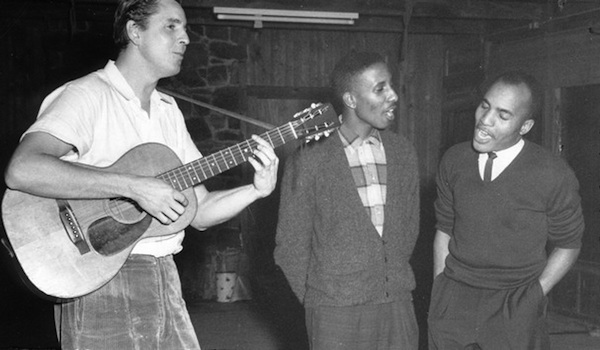
A Coincidental Sound
By Gregory Lucas-Myers, Charles H. Wright Museum of African American History
On November, 16, 2011, the Charles H. Wright Museum of African American History played host to a screening of “Soundtrack for a Revolution,” a documentary that examined music’s multiple roles in the Civil Rights Movement. Gregory Lucas-Myers, intern at The Wright Museum, gives his take on one aspect.
“Guy” and “Candie” are not names that one expects to see in association with memories of the Civil Rights Movement of the 1960s. Most assuredly, we remember names such as King, Evers, X, and others who stood out as iconic leaders. We may also recall lesser-known heroes, such as Schwerner, Shuttlesworth, Goodman, Chaney, Liuzzo, or the multitudes of everyday people who risked everything to stand up. Even the villains will get recognition: Wallace, Conner, Faubus. But…Guy and Candie?
As it turns out, these two unusual names played a very important role in the development and success of the Civil Rights Movement. From looking at them in the documentary “Soundtrack for a Revolution,” I would not peg the white couple as crucial members of the movement. They appeared straight-laced, someone you see every day, unremarkable. Yet, here they were being mentioned in the same musical context as the Freedom Riders, the Montgomery Bus Boycott, and Dr. King’s efforts.
So, how did they contribute?
Guy Carawan introduced the now-signature Civil Rights Movement song “We Shall Overcome,” as well as the general concept of drawing on spirituals as protest songs, to students of the Student Nonviolent Coordinating Committee in April 1960. The SNCC had invited Guy to sing at the end of the first day of a three-day conference at Shaw University in North Carolina. Coincidentally, the conference was called by the Southern Christian Leadership Conference, which prompted the students to make their own organization for the movement. Two weeks earlier, in neighboring Tennessee, the Highlander Folk School (now Highlander Research and Education Center) held a seven-day conference at which Guy Carawan taught “We Shall Overcome” to the students, who came from over 20 colleges. Guy had been in charge of the music program of the school for several years already, but the conference, and a renewed spirit, was inspired by the student lunch counter sit-ins which began in February 1960, back in North Carolina.
As it turns out, Guy first met Candie at the Highlander School’s conference. She was already actively participating in the sit-in movement, and was a singer to boot. They married in March 1961. Of course, none of this would have been possible without the spirituals of the black slaves of America. Songs, such as “I Woke Up This Morning” and “I’m Gonna Sit at the Welcome Table,” were appropriated from spirituals and had lyrics altered to reflect the current struggles. In addition, songs such as “We Shall Not Be Moved” were appropriated from past labor movements, and given the same treatment: “Wallace is our enemy/ He must be removed.”
All of this goes to show that history builds upon itself on a grand scale, one event or practice inspiring and igniting others. Throughout it all, it is always the unsung masses, whether they are slaves or songwriters, that prove to have the most profound and lasting effects.
For more information on film screenings like the one that inspired this article, and other wonderful events, please visit www.TheWright.org.
Recent Content
-
Artsarticle ·
-
Artsarticle ·
-
Artsarticle ·
